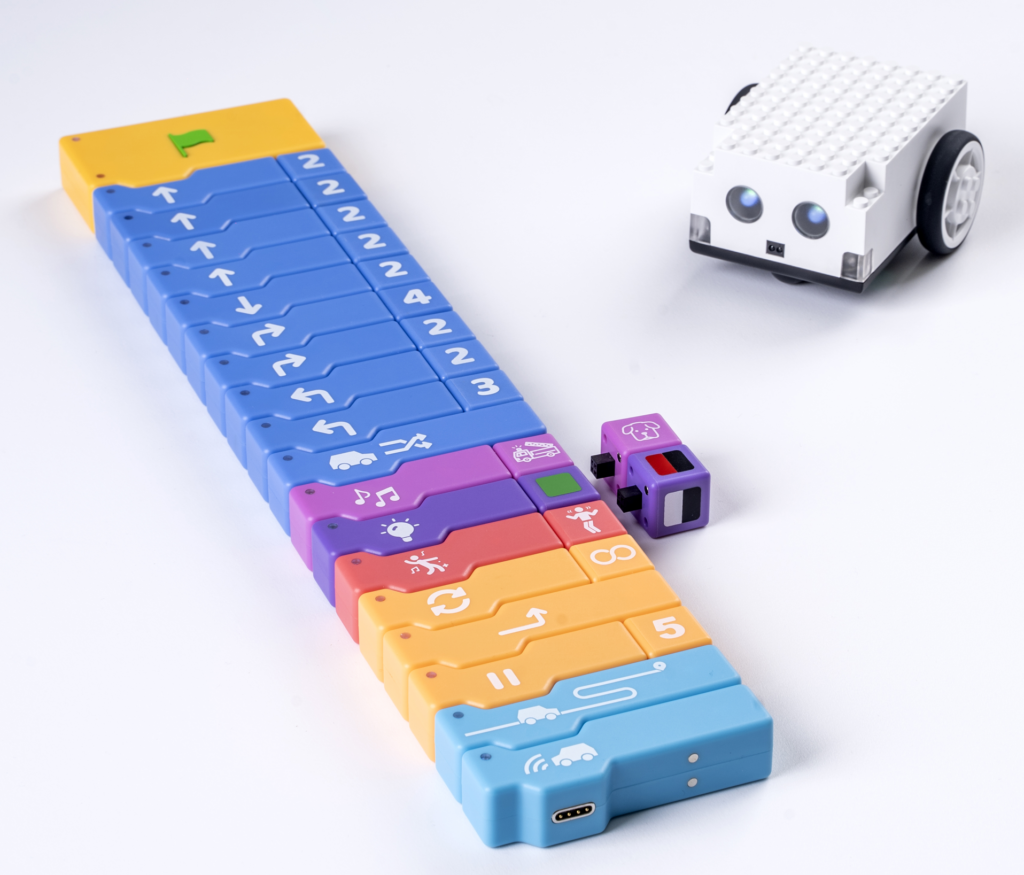COBOBLOCKS Education Program to Improve Collaborative Problem-Solving(CPS) Competency
A collaborative programming education program using COBOBLOCKS is developed and applied. COBOBLOCKS is a tangible programming education device that can be easily accessed in school and does not require a digital device. We propose a SW education program that makes programming education more intuitive, easier, and more collaborative. And we found out what changes have been made in mproving elementary school students’ CPS competency.
Why COBOBLOCKS?

Why COBOBLOCKS?
COBOBLOCKS is a tangible coding device that does not require a screen to learn coding in any space. OBOBLOCKS consists of a robot car and coding blocks that use the same colors and shapes as the cratch, the world’s largest block coding platform used in more than 150 countries and available in 40 languages. Learners use tangible blocks that can be connected with magnets with their hands and press the green flag of the event block to see the robot car move as coded. Children can learn the basic concepts of programming only with concrete manipulation of COBOBLOCKS, without a computer.
Contents of Education Program

This educational program applied a total of 8 classes for 2 days, 4 classes per day for each group. The contents of classes are as shown in Table. Students use COBOBLOCKS to learn the input, output and sensor of the robot, the sequential structure and repetition structure of programming, and debugging.
Table. Contents of classes
| Period | Subjects | Contents |
| 1 | Input and output of the robot | ∙ Introduction of program ∙ LED, Sound, Dancing blocks |
| 2 | Sensor of the robot | ∙ Self-driving ∙ Line-tracing |
| 3 | Sequence | ∙ Move forward, backward ∙ Turn left, Turn right ∙ Understanding random block |
| 4 | Loop | ∙ Learning to code with loops |
| 5 | Sequence and Loop | ∙ Drawing a line ∙ Drawing a circle ∙ Drawing a donut |
| 6 | Sequence and Loop | ∙ Create your own work using loops and sequential statements |
| 7 | Sequence and Loop | ∙ Decorate robot car with LEGO ∙ Robot battle |
| 8 | Debugging | ∙ Find improvements and fix the code to join robot battle ∙ Closing |
How did the students react?

The education program was applied to a total of 48 students in the second grade (7 years old) using the camp held at Seoul National University of Education. The following conclusions were obtained as a result of the analysis and discussion of the test before and after the program application.
First, it was found that the tangible programming education program using COBOBLOCKS could enhance students’ collaborative problem-solving(CPS) competency. As a result of statistical analysis of CPS competency, ‘relationship maintenance and conflict resolution ability’, ‘collaborative decision-making ability’, and ‘social competence’ of students all seemed to be improved after applying the education program.
Second, it was found that students would prefer collaborative learning in tangible programming using COBOBLOCKS. As a result of interviewing students after applying the program, 45 out of 48 students responded positively to collaborative learning.
Note that this study has been published in New Technology in Education and Training(Springer, Lecture Notes in Education Technology), 255-266, Aug. 2024.
Download the full paper(Click) Paper Link to Springer(Click)